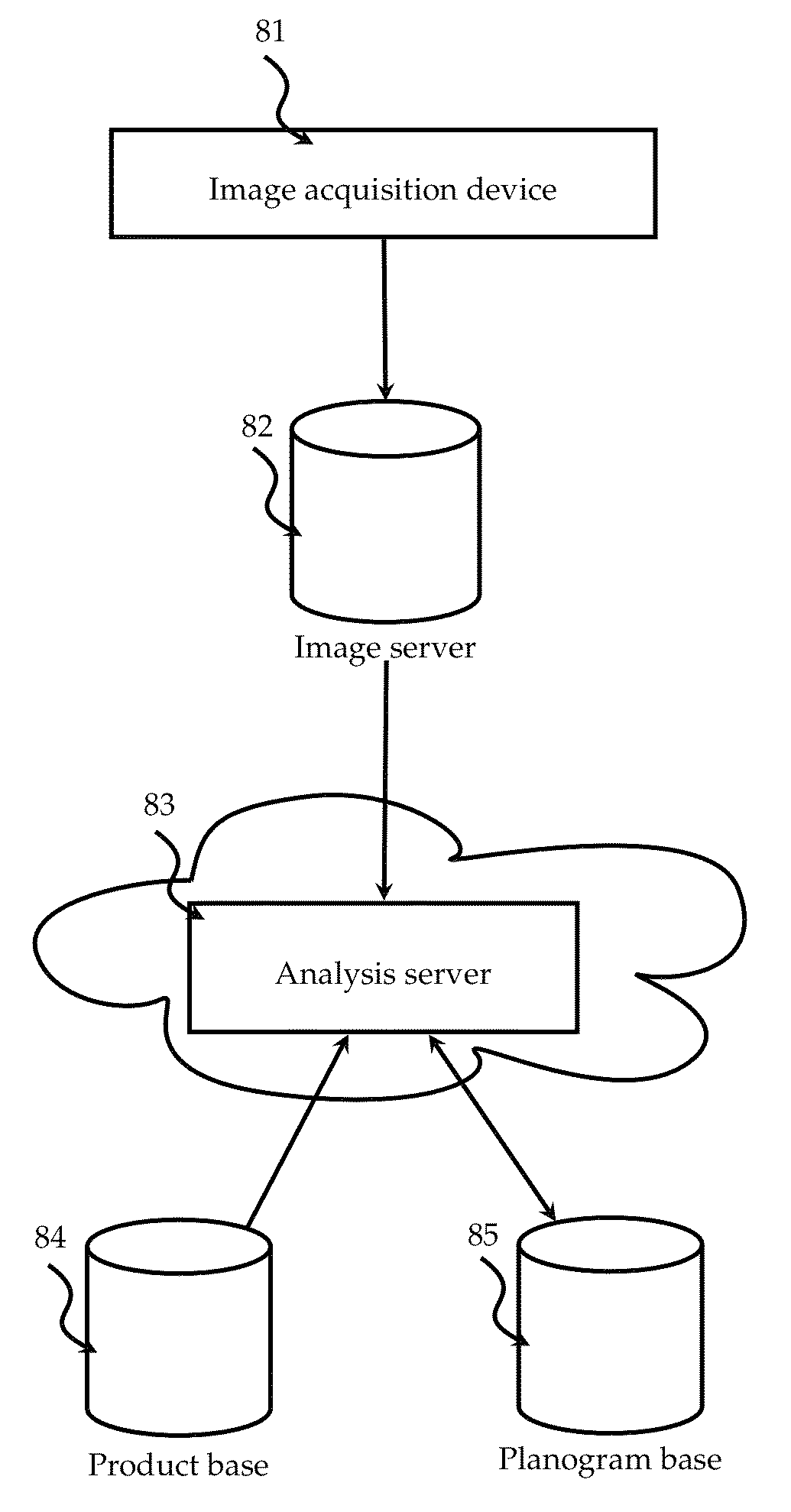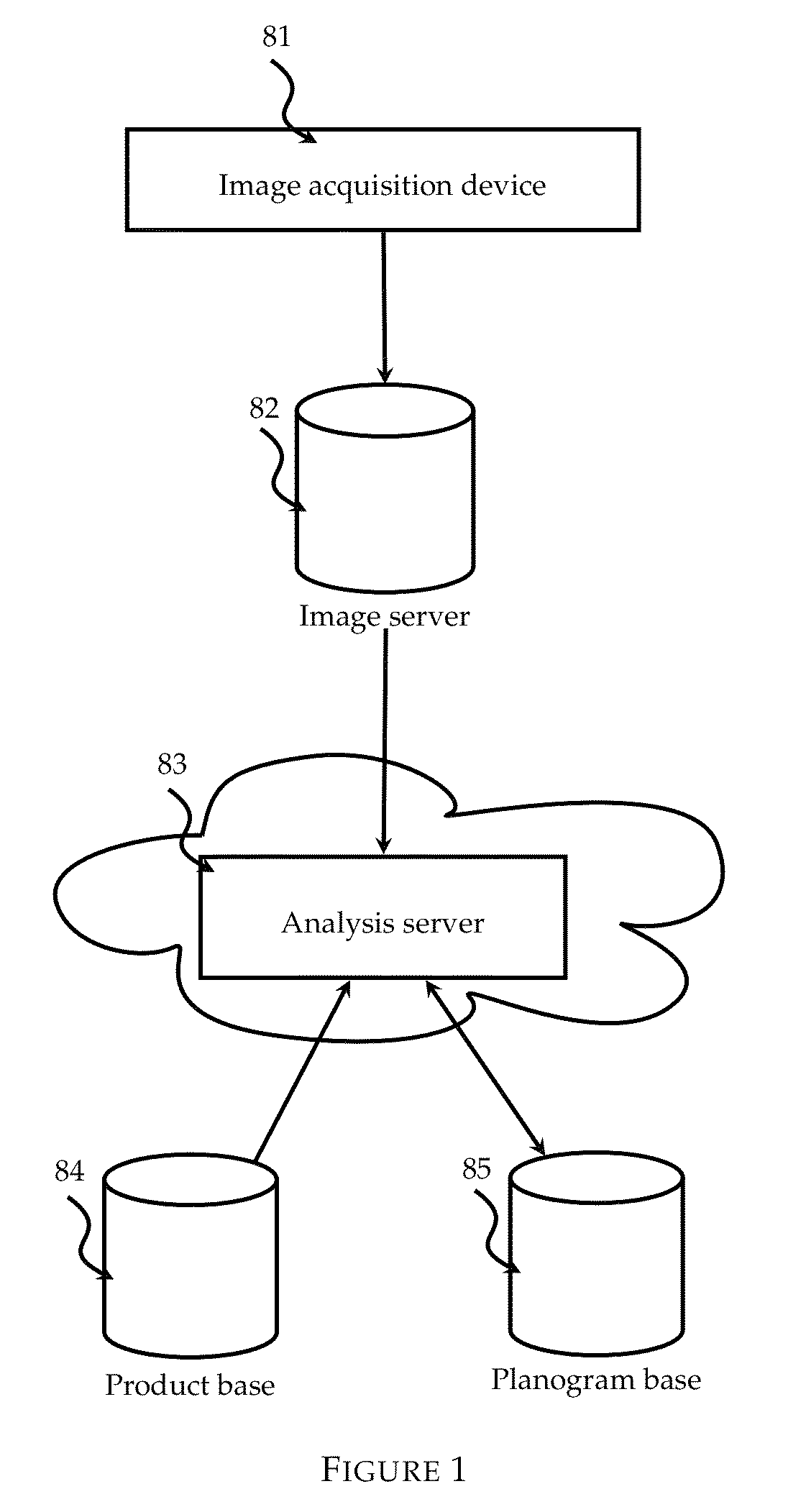Method for the automated extraction of a planogram from images of shelving
a technology of planogram and image, applied in the field of automatic extraction of planogram from images of shelving, can solve the problems of daily monitoring and a great deal of effort, and the extraction method is not suitable for use, and the extraction method is suitable for us
- Summary
- Abstract
- Description
- Claims
- Application Information
AI Technical Summary
Benefits of technology
Problems solved by technology
Method used
Image
Examples
Embodiment Construction
[0044]FIG. 1 is a diagram showing a minimum device for implementing our method for automatically constructing a planogram. An image acquisition device (81) creates images of shelving (1), stored on an image server (82). The analysis server (83) recovers the images (1) on the image server (82) in order to construct a planogram (6) using the product base stored on the data server (84), as well as the global context (I2) calculated from planograms stored in the planogram base (85). The final planogram (6) itself is stored in the base (85).
[0045]FIG. 2 is a diagram showing the structure of a planogram (3O), as constructed by our method. A structure (3O) is thus composed of elements (61) and shelves (62). FIG. 3 is a diagram showing a planogram (6) as constructed by our method, that is to say a planogram structure (3O) with a set of products (63) positioned according to the input images (1). A planogram (6) therefore consists of products and a set of elements (61) serving as a support fo...
PUM
 Login to View More
Login to View More Abstract
Description
Claims
Application Information
 Login to View More
Login to View More - R&D
- Intellectual Property
- Life Sciences
- Materials
- Tech Scout
- Unparalleled Data Quality
- Higher Quality Content
- 60% Fewer Hallucinations
Browse by: Latest US Patents, China's latest patents, Technical Efficacy Thesaurus, Application Domain, Technology Topic, Popular Technical Reports.
© 2025 PatSnap. All rights reserved.Legal|Privacy policy|Modern Slavery Act Transparency Statement|Sitemap|About US| Contact US: help@patsnap.com



